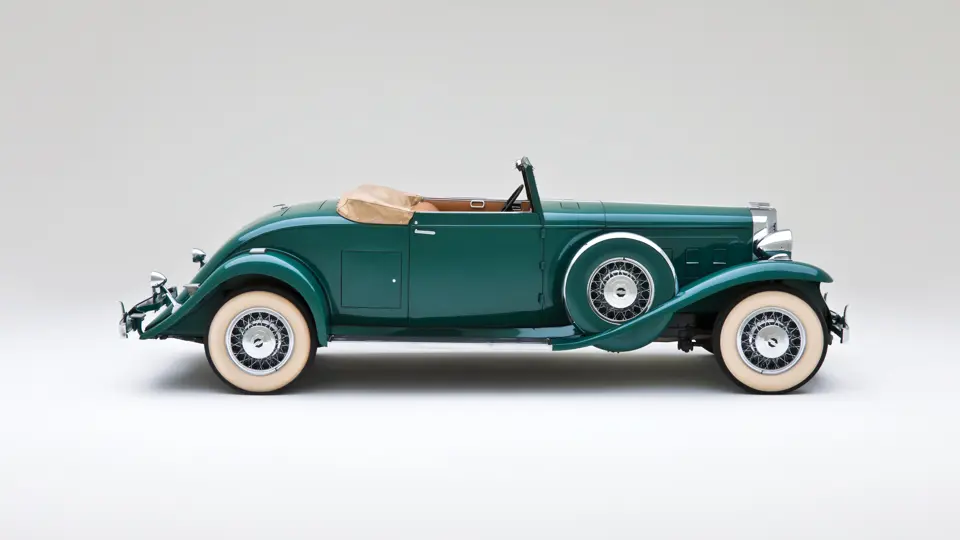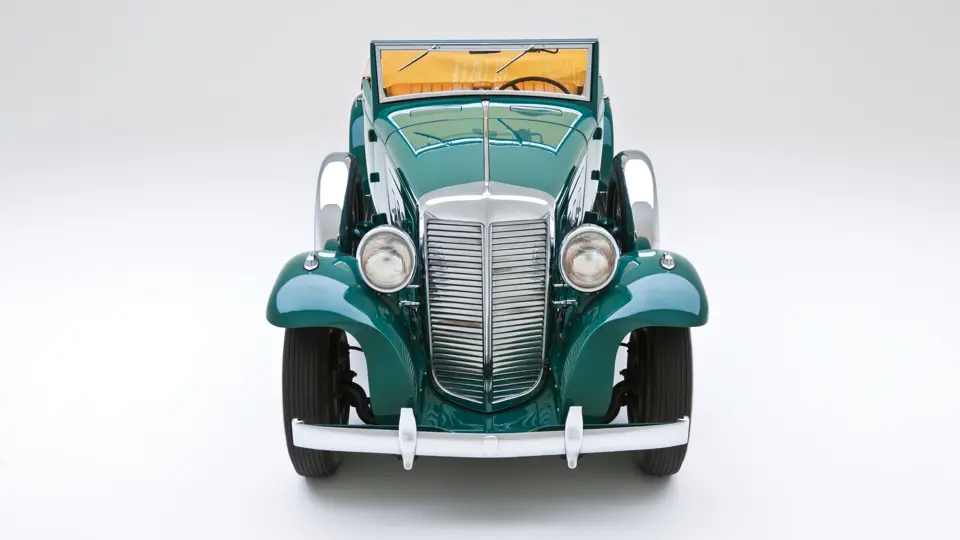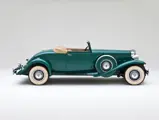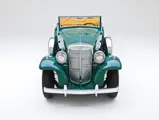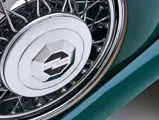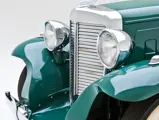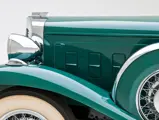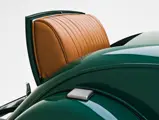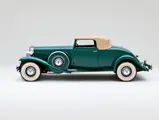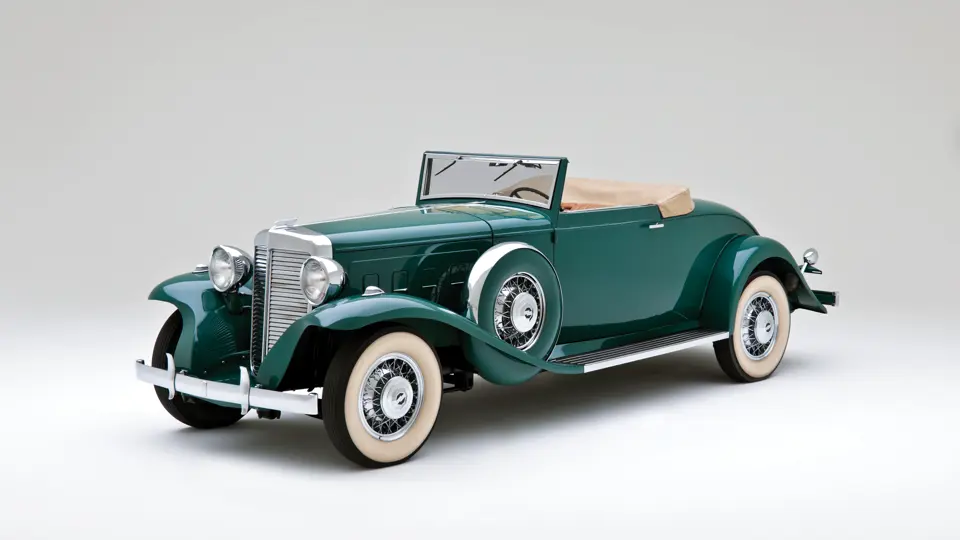
1932 Marmon Sixteen Convertible Coupe by LeBaron
{{lr.item.text}}
$962,000 USD | Sold
{{bidding.lot.reserveStatusFormatted}}
- An American masterpiece of styling and engineering
- One of just eight surviving authentic examples
- Formerly of the Harrah and Lyon Family Collections
- Single ownership for 27 years
- Classic Car Club of America (CCCA) Full Classic
Like all great pieces of art, the Marmon Sixteen was one man’s vision of perfection. Automobile pioneer Colonel Howard Marmon created a triumph of pattern-making and foundry technology, containing at its heart an all-aluminum V-16 engine on a state-of-the-art chassis. With 200 horsepower from over 490 cubic inches, the car was capable of out-accelerating a Duesenberg Model J—yet it cost buyers only one-third as much. It was dressed by Walter Dorwin Teague, Jr., an MIT student working for his father’s industrial design firm, whose crisp lines devoid of gratuitous ornamentation and characterized by crisp design shapes embodied the lean sportiness of the age.
It was a design in which superb styling and world-class engineering existed with harmonious balance, as has seldom been seen before or since. Like a fine Swiss watch or the best mahogany speedboat, it whispered quietly but firmly of its owner’s wealth and exquisite taste. Seventy-six remain in existence; only eight of them are convertible coupes, by far the most desirable style. With the exception of the example now offered, all remain firmly held in long-term private collections from which they are unlikely to soon emerge.
THE HARRAH’S SIXTEEN
I drove the car around Reno and out onto Interstate 80, attracting a good deal of attention all along the way. Other motorists on the highway reacted as I expected—with surprise or astonishment, the latter most particularly from those I passed, and I passed quite a few.
—Bill Harrah, “Marmon Sixteen Impressions,” Automobile Quarterly, Vol. 27 No. 2
Much has been written of William F. Harrah and his quest to assemble the world’s largest automobile collection. Between 1948 and his death in 1978, he established the modern standards of quality and authenticity in restoration and made the immaculate results available for all to see in a vast facility—open to the public free of charge—on the outskirts of Reno, Nevada. Even among his 1,500 automobiles, however, Harrah had his favorites, which were often the cars that he had most admired and wanted in his youth. The Marmon Sixteen convertible coupe was one of them.
It was nearly as challenging to acquire a Sixteen convertible coupe then as it is now. Harrah finally sourced serial number 16 144 859 from Robert Sedgwick of Inglewood, California. In typical fashion, upon arrival at Harrah’s Automobile Collection, the car was extensively photographed and the collection’s full-time staff set about preparing for restoration by researching every detail of its original construction and finishes. Period brochures and magazine articles were consulted, as were known authorities, among them William R. Gibson of Massachusetts, who in a letter attributes the car to an original owner in Illinois. Mr. Gibson also noted the car was among the last built as a 1932 model, though it was first sold in 1933—hence the addition of the front fender marker lights more common to the 1933s.
Harrah’s exhaustive restoration of the Marmon in its original color scheme was completed in the 1960s, after which it took pride of place in his collection. It was featured in many of the Harrah’s Automobile Collection souvenir books and postcards published over the next decade. It was also prominently featured in the namesake book written by Dean Batchelor on the Harrah’s collection, as well as in two issues of Automobile Quarterly, Vol. 7 No. 2 and Vol. 27 No. 2.
After Mr. Harrah’s passing, the Marmon was one of a large group of automobiles sold from the collection to renowned enthusiast General William Lyon in 1987. General Lyon maintained the Sixteen convertible coupe for some time before selling it to the current owners, with whom it has now remained in loving hands for well over a quarter of a century. It is offered today still wearing much of its original Harrah’s restoration, with only a recent freshening. The car is accompanied by a history file that includes a copy of the original Harrah’s Automobile Collection research and restoration file, a treasure trove of information for the historically minded new owner.
Much can be said of how an automobile represents a time or a place, but this particular Marmon Sixteen is more than that. If the Sixteen itself embodies the best of engineering and styling from its period, then this car is among the best of the Sixteens. It has, to many enthusiasts, been the instantly recognizable symbol of its marque and model since the first time it purred at 95 mph down a Nevada desert highway.
Then as now, with quiet authority, it spoke for itself.
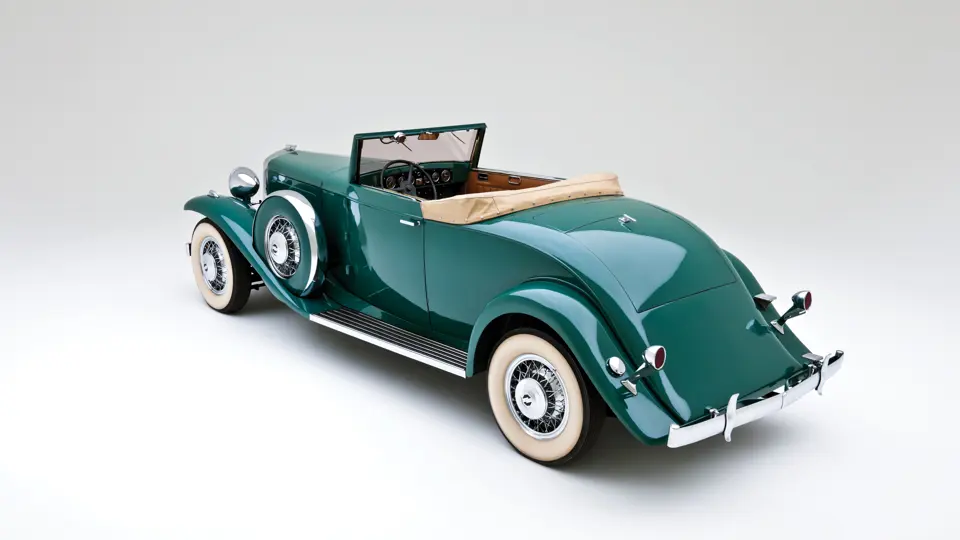



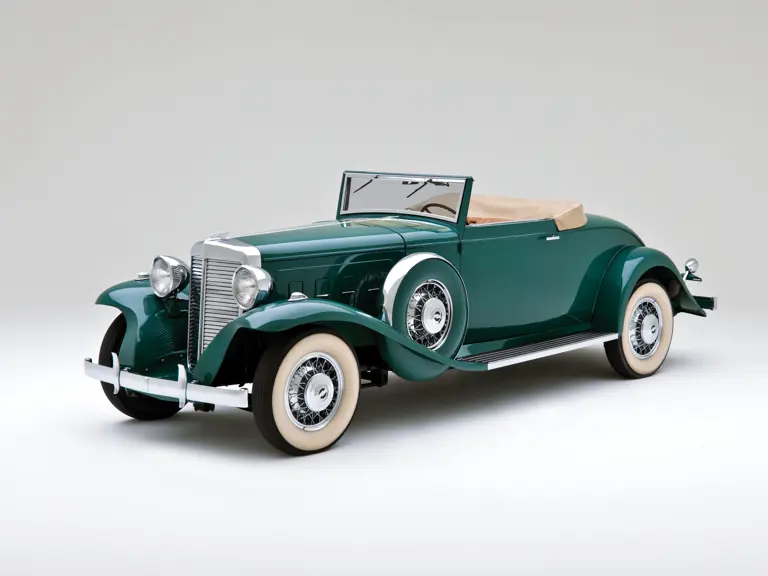
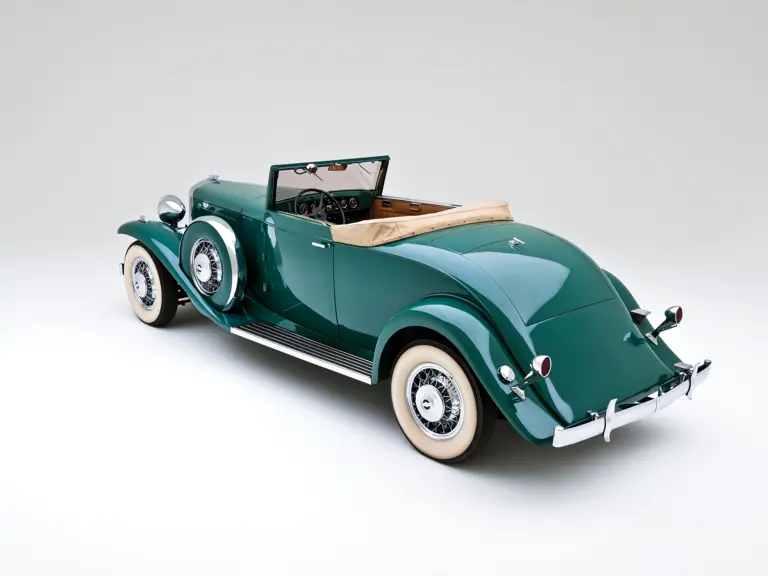
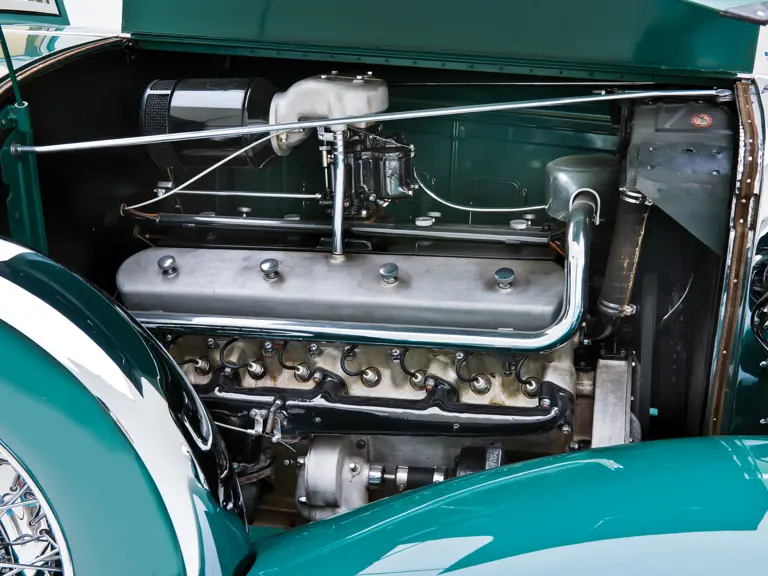
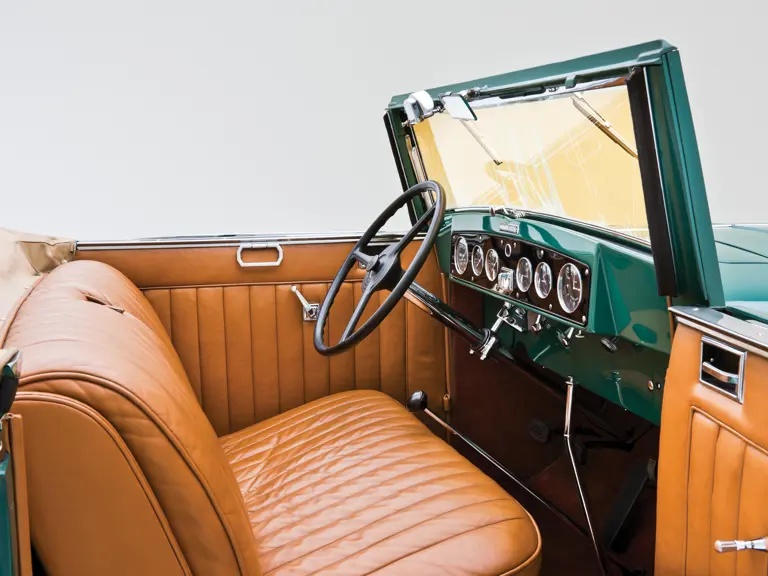
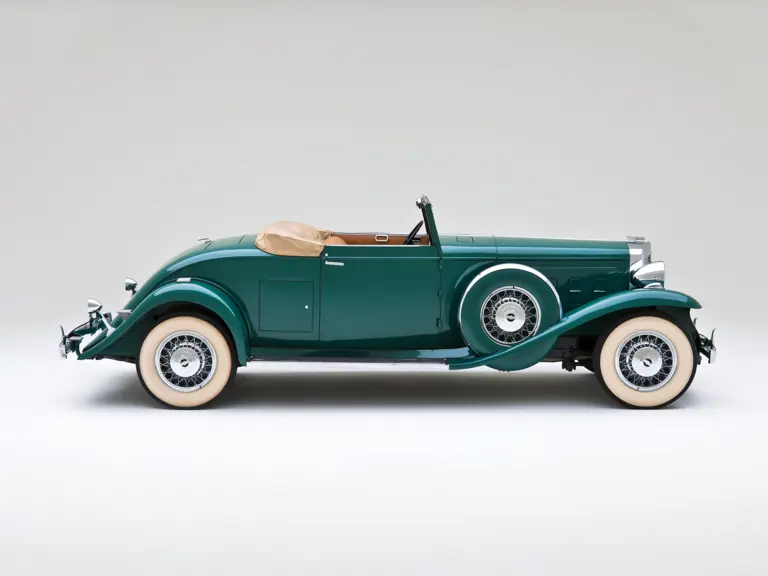
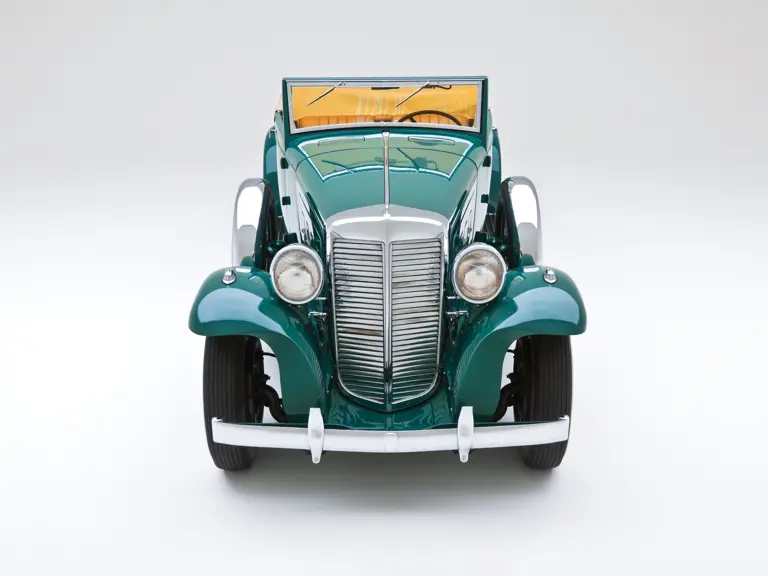


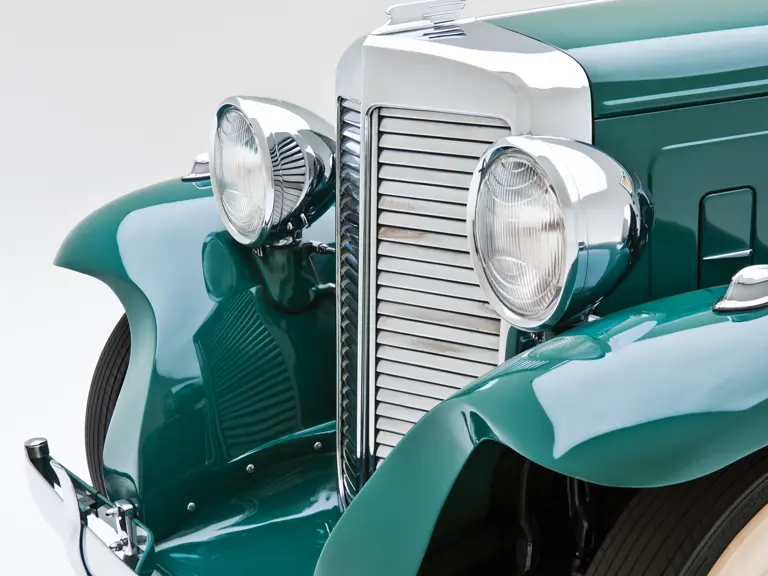
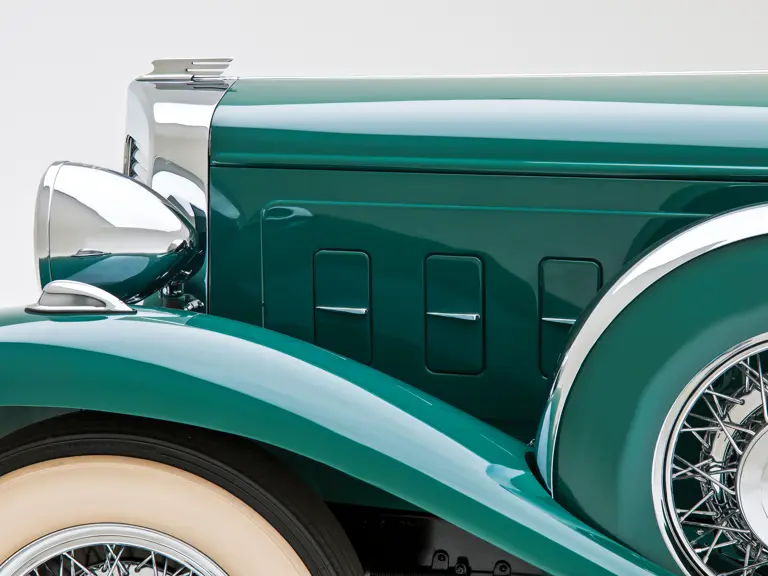
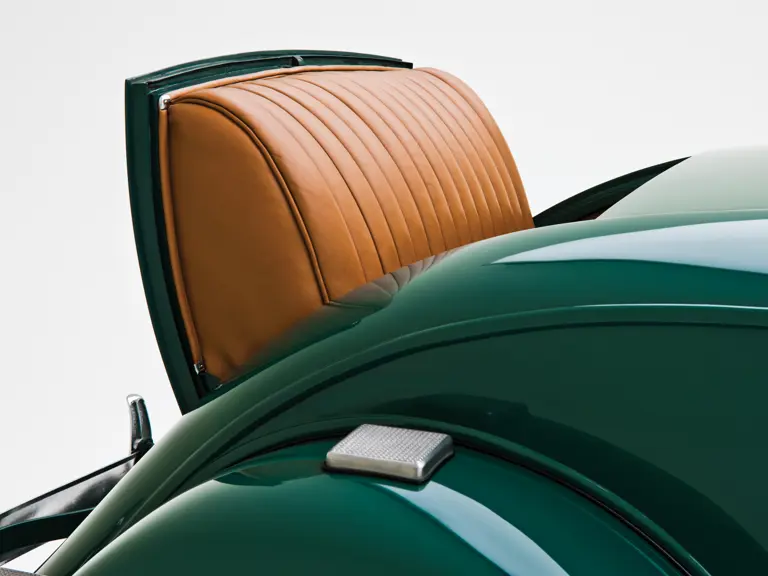
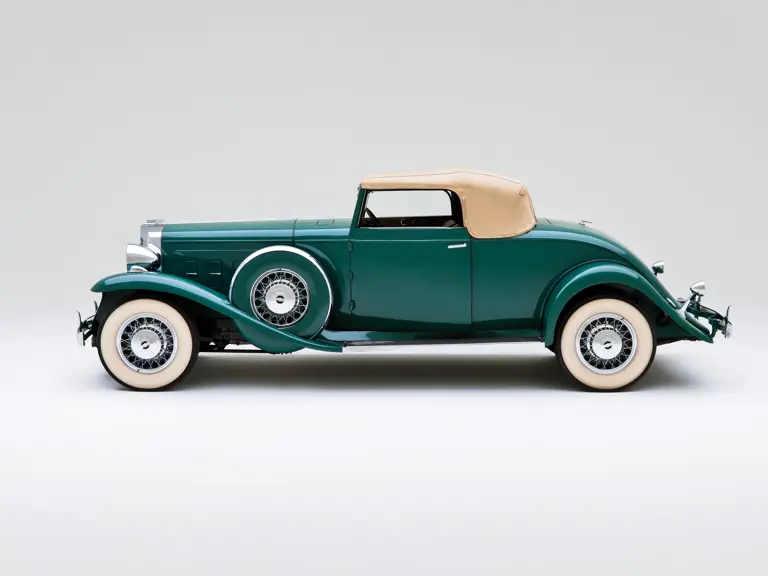
 | New York, New York
| New York, New York
